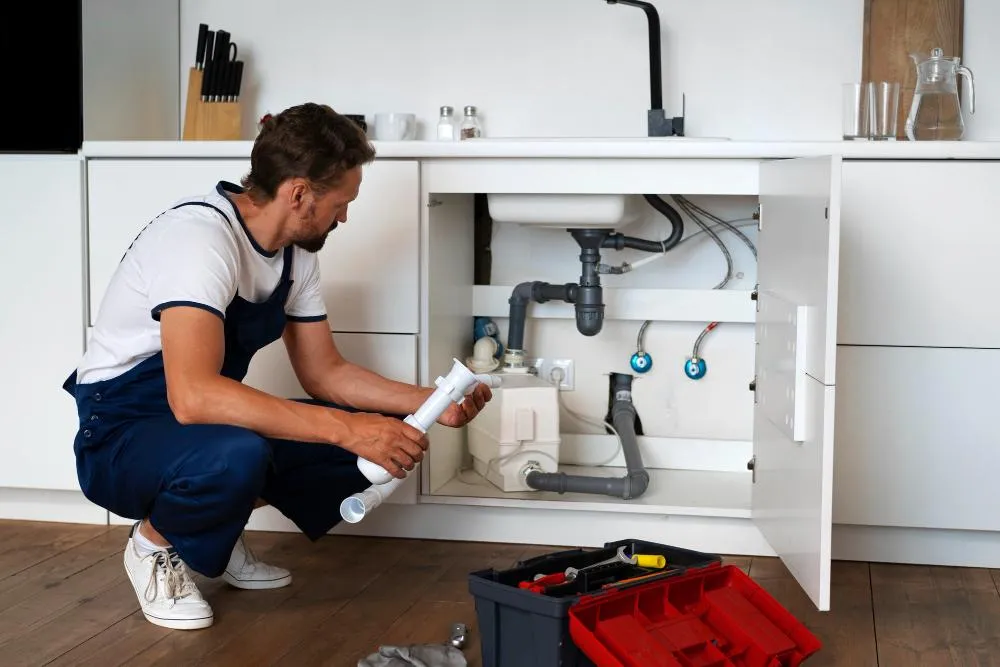
Seasonal Plumbing Checklist for Edmonton Homeowners
Edmonton’s changing seasons—from frigid winters to thawing springs and hot summers—put your plumbing system through serious stress. A frozen pipe, a neglected sump pump, or even a small leak can quickly become a major expense if ignored.
To prevent costly issues, Edmonton homeowners need a clear, practical checklist that fits the city’s climate. This seasonal plumbing guide walks you through what to inspect and maintain throughout the year. By following these steps, you’ll protect your home, save money, and avoid plumbing emergencies before they happen.
Why a Seasonal Plumbing Checklist Matters in Edmonton
Plumbing systems in Edmonton experience extreme temperature fluctuations and moisture levels. Without proactive maintenance, you risk frozen pipes, leaks, or failing systems when you need them most.
Here’s why seasonal maintenance makes all the difference:
It prevents emergencies before they start
It helps identify small issues before they become big problems
It extends the lifespan of your plumbing fixtures and appliances
It saves on water bills and energy costs
At On Budget Plumbing, our mission is to help homeowners across Edmonton stay ahead of these seasonal challenges. With regular checks and affordable plumbing services, you can keep your system running efficiently all year.
Edmonton Plumbing Maintenance Through the Seasons
Each season in Alberta presents unique plumbing challenges. Here’s how to protect your system, one season at a time.
Late Fall to Early Winter: Freeze Protection
As temperatures drop, frozen pipes are the biggest risk for Edmonton homeowners. Preparing early is key.
What to do:
Insulate exposed pipes in basements, crawlspaces, and exterior walls
Disconnect and drain garden hoses
Shut off and drain outdoor faucets or install frost-proof ones
Test your home’s main water shut-off valve
Flush the water heater to remove sediment buildup
Inspect your sump pump to ensure it’s working before the spring thaw
Winter: Monitor for Freezing and Pressure Issues
Once winter is in full swing, pipes and water heaters face constant pressure.
What to do:
Keep the indoor temperature consistent (avoid drastic thermostat drops)
Let faucets drip slightly during extreme cold to prevent freezing
Check for frost, bulging, or condensation on exposed pipes
Ensure crawlspaces and basements are properly insulated and ventilated
Spring: Drainage and Thaw Inspection
When the snow melts, excess water and thawing soil can expose hidden plumbing problems.
What to do:
Check for leaks around the foundation, sump pump, and basement walls
Test all indoor and outdoor drains for slow flow
Clean gutters and downspouts to direct water away from your home
Test your sump pump under load to ensure it activates correctly
Run water through rarely used faucets to flush out debris or buildup
Summer: Maintenance and Efficiency
Warmer months are ideal for preventive maintenance, outdoor repairs, and efficiency upgrades.
What to do:
Inspect outdoor hose bibs and sprinkler systems for leaks
Check water pressure and inspect showerheads and faucets
Clean sink and shower drains to prevent clogs
Flush the water heater again mid-year if you have hard water
Inspect visible plumbing and gas lines for wear or corrosion
Step-by-Step Routine for Every Season
Having a process makes maintenance easier and more consistent.
Follow this simple routine each season:
Walk through your home and check every visible pipe for leaks or corrosion
Test all shut-off valves to ensure they work properly
Run water in all fixtures to spot slow drains or unusual noises
Inspect your water heater for sediment buildup or rust
Check and clean sump pumps, ensuring the float moves freely
Review outdoor plumbing for leaks or cracks
Note any irregularities and schedule professional inspection if needed
Document your findings after each check. Keeping a seasonal log helps track recurring issues and ensures nothing gets overlooked.
Common Questions About Seasonal Plumbing
How often should I flush my water heater in Edmonton?
Once or twice a year is ideal. This helps remove sediment buildup, especially important in areas with hard water like Edmonton.Can I insulate pipes myself?
You can handle exposed pipes using foam sleeves, but for pipes behind walls or in confined areas, it’s safer to hire a professional plumber.What happens if my sump pump fails in spring?
Basement flooding can occur quickly. Always test your pump before thaw season, and consider adding a backup system.What plumbing jobs should always be left to professionals?
Gas line work, major pipe replacements, and any task involving permits or structural changes should be handled by a certified plumber.When is the best time to book preventive plumbing service?
Late summer or early fall is perfect for inspections—before the temperatures drop and plumbing demand peaks.
Conclusion
Your plumbing system works hard year-round, especially in Edmonton’s unpredictable climate. Following a seasonal plumbing checklist ensures your pipes, fixtures, and appliances stay efficient and safe through every freeze, thaw, and heatwave.
If you find anything unusual during your inspection—like persistent leaks, weak water pressure, or sump pump issues—schedule a professional visit. On Budget Plumbing offers reliable, affordable plumbing services across Edmonton and surrounding areas, helping you stay ahead of seasonal surprises.